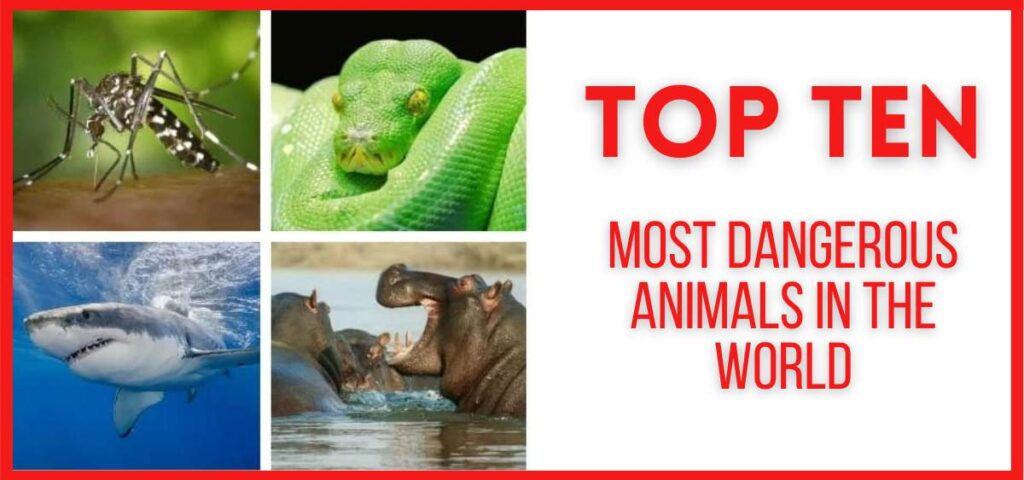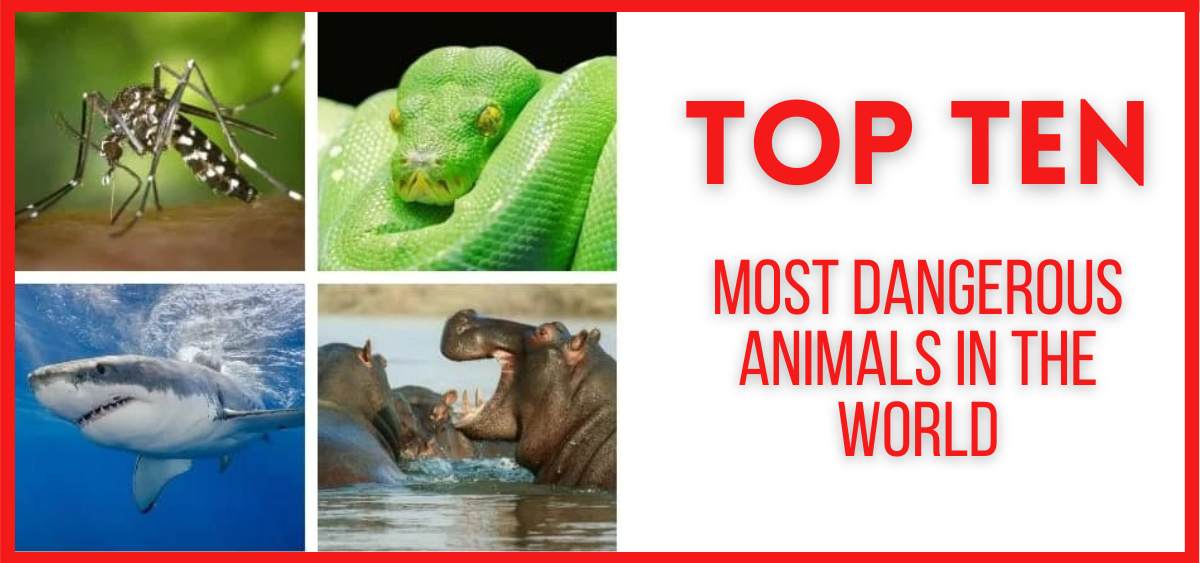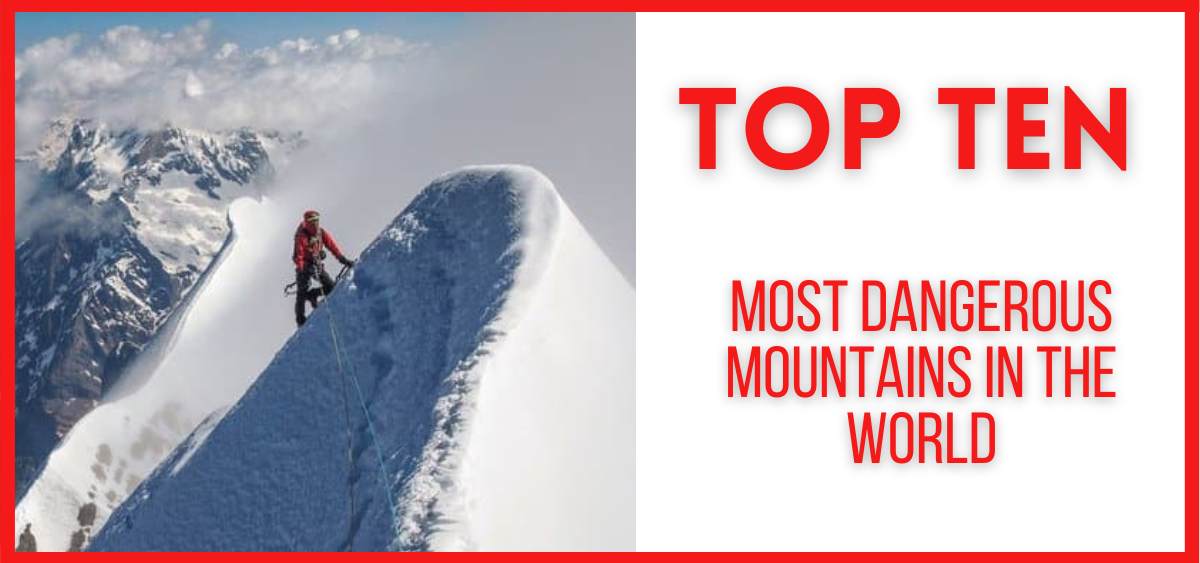Our planet teems with a diverse array of creatures, many of which pose no threat to humans. However, lurking in the shadows are dangerous animals whose presence commands respect. From the depths of the ocean to the heart of the jungle, these formidable beings have earned their reputation as some of nature’s most perilous predators. In this blog, we delve into the world of dangerous animals, exploring the ten most terrifying creatures on Earth. These animals, with their lethal combinations of strength, speed, and venom, have instilled fear in the hearts of humans for centuries. Join us as we uncover the secrets of these deadly animals and learn how to stay safe when encountering them.
Also, read: Top 10 Deadly Foods for Dogs
Deadly Dozen: Top 10 Most Dangerous animals in the World
Think you might know what the 10 deadliest animals might be? Our expert guide rounds up the animals causing the most human deaths per year, and some of them might just surprise you. Determining the “most dangerous animal” is subjective and depends on various factors like the number of human deaths caused, potential harm, and perceived threat. However, here are some animals widely considered to be among the most dangerous:
1. Mosquitoes
- Height: 1.6-3 mm
- Weight: Approximately 2–3 mg
- Origin: Fossil records indicate they existed over 170 million years ago
- Humans Killed Annually: Estimated to cause over 700,000 deaths annually
- Perceived Threat: Often underestimated due to their small size, they pose a significant health risk
- Why dangerous? Mosquitoes are vectors for numerous deadly diseases, including malaria, dengue, Zika, and yellow fever. Female mosquitoes transmit these diseases while feeding on human blood, making them a silent but deadly threat to human health.
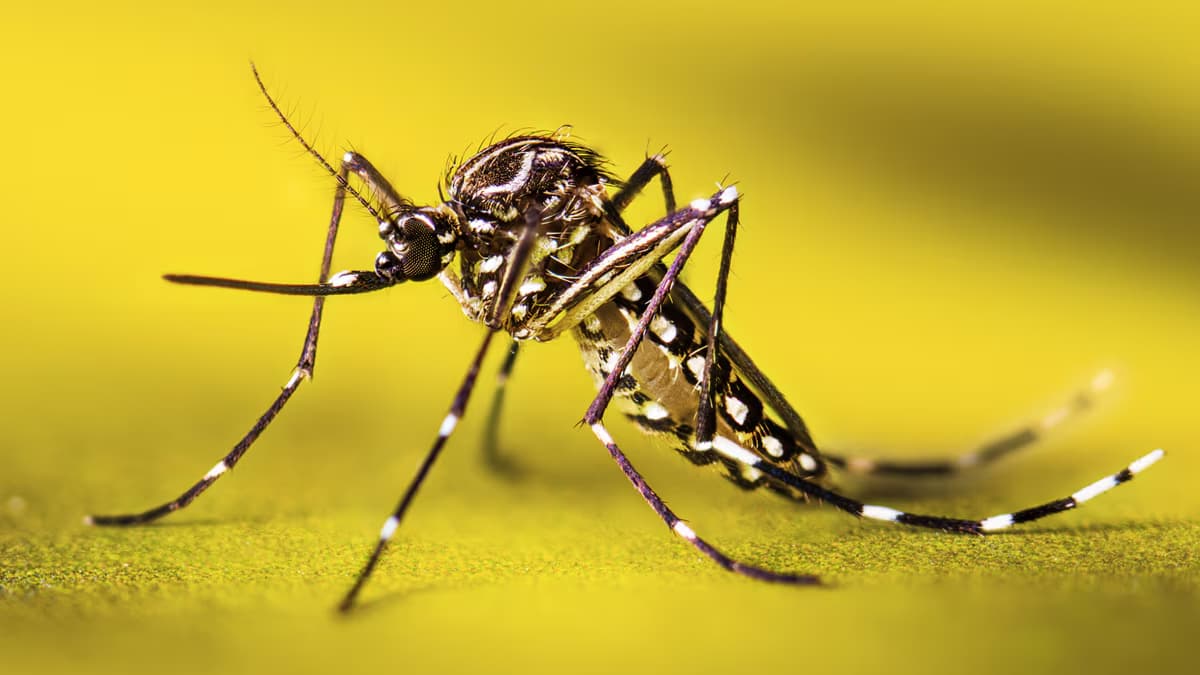
Despite their diminutive size, mosquitoes reign supreme as the world’s deadliest animal. These winged menaces are responsible for the transmission of numerous deadly diseases, including malaria, dengue, Zika, and yellow fever. Armed with a proboscis designed for piercing skin and sucking blood, female mosquitoes are the primary culprits. While feeding on human blood to nourish their eggs, they inadvertently inject infected saliva into their victims, leading to widespread illness and death. The global burden of mosquito-borne diseases is staggering, with millions of people falling ill each year. Eradication efforts have been met with challenges, as these resilient insects have developed resistance to many insecticides. As a result, the threat posed by mosquitoes remains a pressing global health concern.
Also, read: Top 10 Popular Breeds of Family Dogs
2. Snakes
- Height: Varies greatly depending on species, from a few inches to over 30 feet
- Weight: Ranges from a gram to over 200 kilograms
- Origin: Fossil records indicate snakes evolved over 100 million years ago
- Humans Killed Annually: Estimated to cause tens of thousands of deaths annually
- Perceived Threat: High, with many cultures harboring a fear of snakes
- Why dangerous? Venomous snakes pose a lethal threat through their toxic venom, while non-venomous snakes can inflict serious injury through constriction or biting
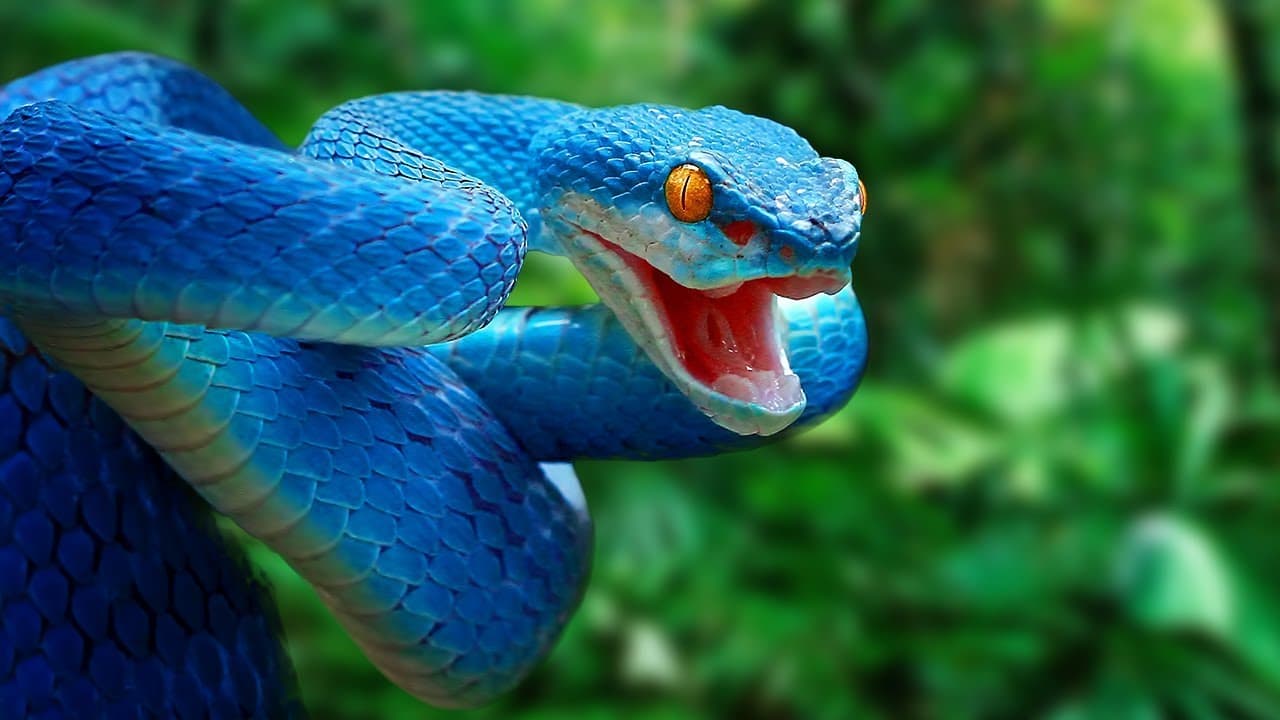
Snakes, with their sinuous bodies and often venomous bites, have inspired both fear and fascination throughout human history. These legless reptiles inhabit diverse ecosystems, from tropical rainforests to arid deserts. While most snake species are harmless to humans, a significant number possess venom capable of inflicting severe injury or death. The threat of snakebite remains a serious issue in many parts of the world, particularly in rural areas with limited access to medical care. Factors such as deforestation and human encroachment into snake habitats have increased the likelihood of human-snake encounters, leading to a rise in snakebite incidents. Despite advancements in antivenom and medical treatment, snakebite continues to be a major public health challenge.
Also, read: Top 10 Most Expensive Plants in the World
3. Saltwater Crocodiles
- Height: Up to 1.5 meters (5.9 ft) when standing
- Weight: Up to 1,000 kg (2,200 lbs)
- Origin: Tropical and subtropical coastal regions of India, Southeast Asia, Australia, and parts of Africa
- Humans Killed Annually: Estimated to be responsible for numerous fatalities each year, though exact figures are difficult to determine
- Perceived Threat: Considered one of the most dangerous reptiles due to their large size, powerful jaws, and aggressive behavior
- Why dangerous? Massive size, powerful jaws, aggressive behavior, and territorial nature
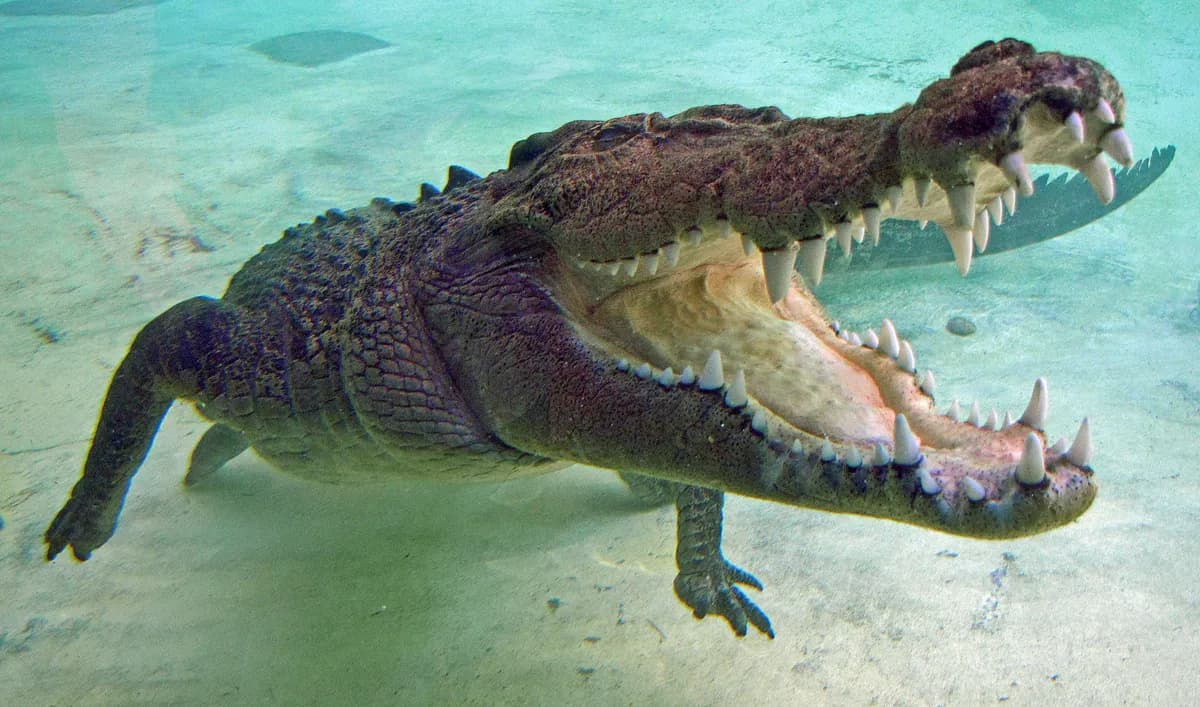
Saltwater crocodiles, often referred to as “salties,” are apex predators renowned for their formidable size and deadly prowess. These ancient reptiles are equipped with an arsenal of deadly weapons, including a powerful tail capable of delivering a knockout blow, and a gaping maw lined with razor-sharp teeth. Inhabiting saltwater and freshwater environments, these apex predators are opportunistic hunters, preying on a wide range of animals, including fish, birds, and even large mammals. Human-crocodile conflict is a persistent issue in many regions, as these reptiles often venture onto land in search of food or nesting sites. Attacks on humans are relatively rare but can be fatal when they occur, solidifying the saltwater crocodile’s reputation as one of the world’s most dangerous animals.
Also, read: Top 10 Strategies for Living Sustainably in 2024
4. Box Jellyfish
- Height: Up to 30 cm (excluding tentacles)
- Weight: Approximately 2 kg
- Origin: Indo-Pacific region
- Humans Killed Annually: Exact figures are difficult to obtain but believed to be responsible for numerous fatalities
- Perceived Threat: Extremely dangerous, often referred to as the world’s most venomous marine creature
- Why dangerous?: Equipped with thousands of stinging cells packed with potent venom, the box jellyfish is a formidable predator. Their translucent bodies make them difficult to spot in the water, increasing the risk of accidental encounters.
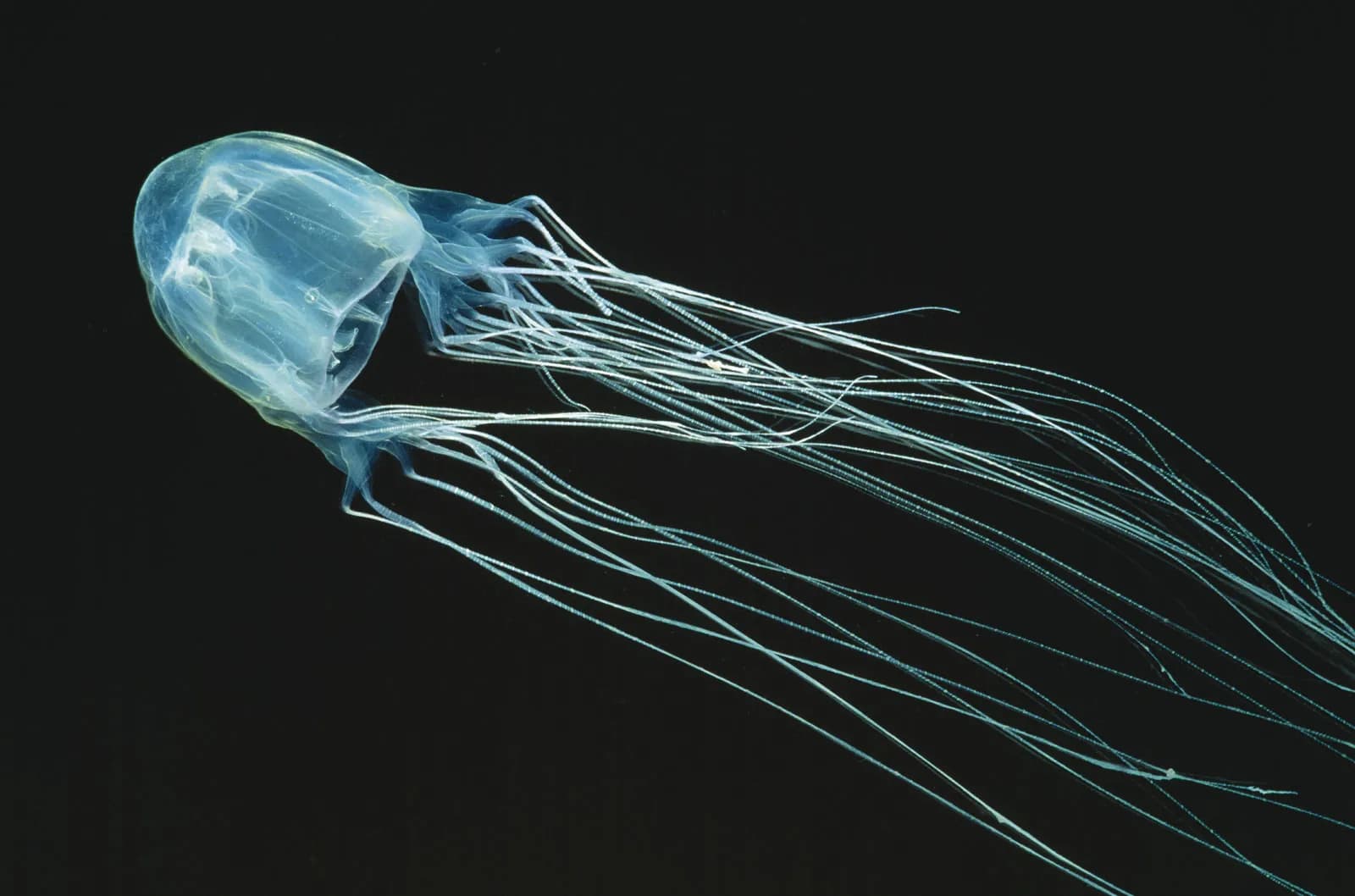
The box jellyfish is a translucent, bell-shaped creature that inhabits the warm waters of the Indo-Pacific region. Often referred to as the world’s most venomous marine creature, this jellyfish possesses a complex nervous system and multiple eyes, enabling it to be a highly efficient predator. Its most dangerous feature is its trailing tentacles, which are armed with billions of stinging cells called nematocysts. These cells deliver a potent venom capable of causing excruciating pain, paralysis, cardiac arrest, and even death within minutes. Beachgoers and swimmers are advised to exercise extreme caution in areas known to harbor box jellyfish, as their stings can be fatal.
Also, read: Top 10 Tips for Building a Minimalist Wardrobe in the USA for 2024
5. Hippopotamus
- Height: Up to 5 feet tall at the shoulder
- Weight: Up to 8,000 pounds
- Origin: Africa
- Humans Killed Annually: Estimated to be responsible for hundreds of deaths annually
- Perceived Threat: Often underestimated due to their docile appearance
- Why Dangerous: Aggressive territorial behavior, powerful jaws, and unpredictable nature
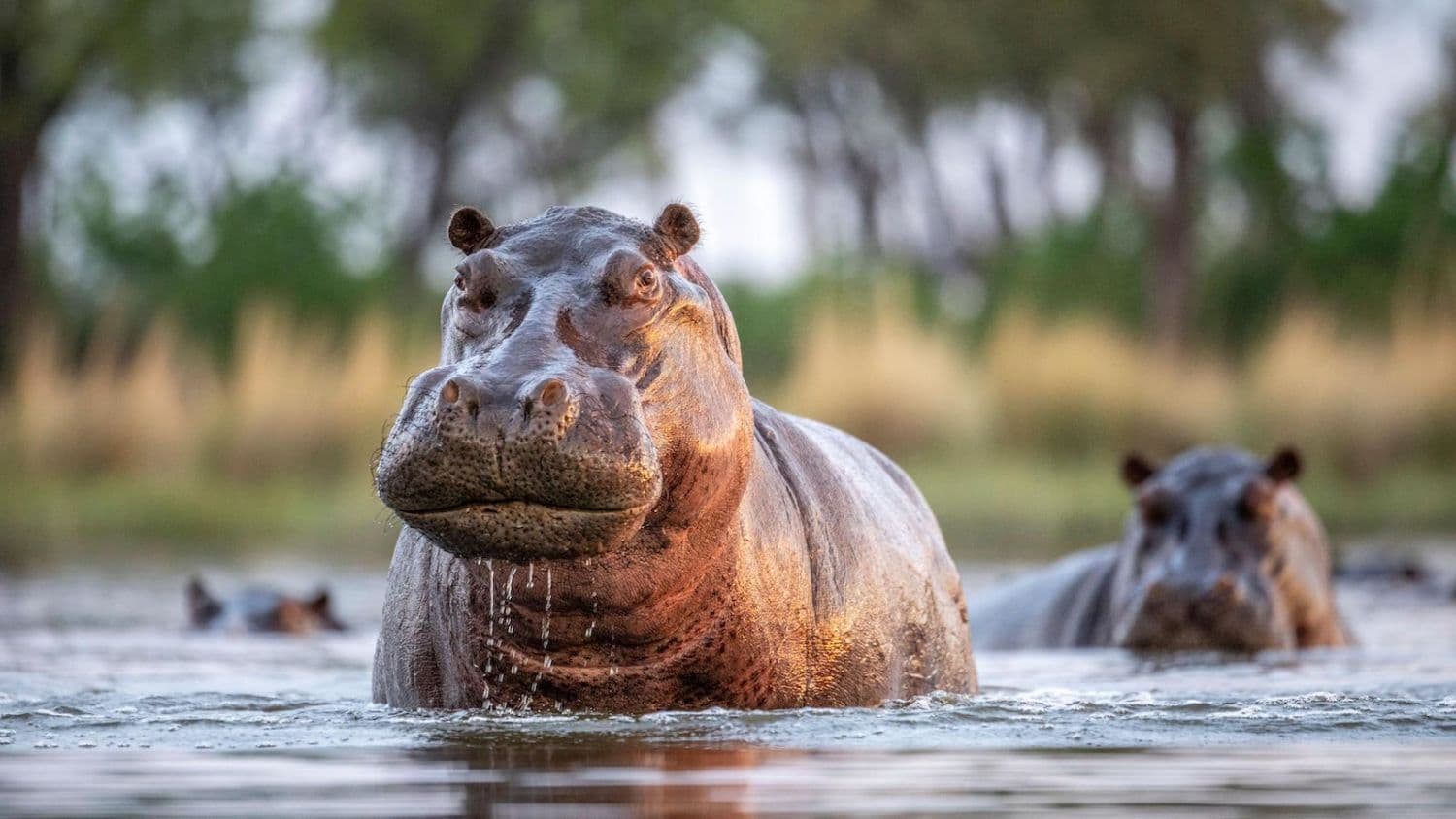
Contrary to their seemingly placid demeanor, hippos are among the most dangerous animals in Africa. These massive semi-aquatic mammals possess a formidable combination of size, strength, and aggression. Their enormous jaws, equipped with powerful teeth, can inflict devastating bites. While they may appear slow and clumsy on land, hippos are surprisingly agile in water and capable of rapid bursts of speed. Their territorial nature makes them highly protective of their territory, and they will readily attack any perceived threat. Additionally, hippos have a short temper and can become aggressive without provocation. These factors, combined with their sheer size and strength, make hippos a formidable and dangerous force to be reckoned with.
Also, read: Top 10 Landscaping Decor Ideas for Lasting Beauty in 2024
6. Cape Buffalo
- Height: Up to 1.7 meters at the shoulder
- Weight: Typically 700–900 kg
- Origin: Africa
- Humans Killed Annually: Exact figures are difficult to obtain, but numerous fatalities occur
- Perceived Threat: Extremely dangerous and unpredictable
- Why dangerous?: Massive size, powerful horns, aggressive behavior, and unpredictable nature
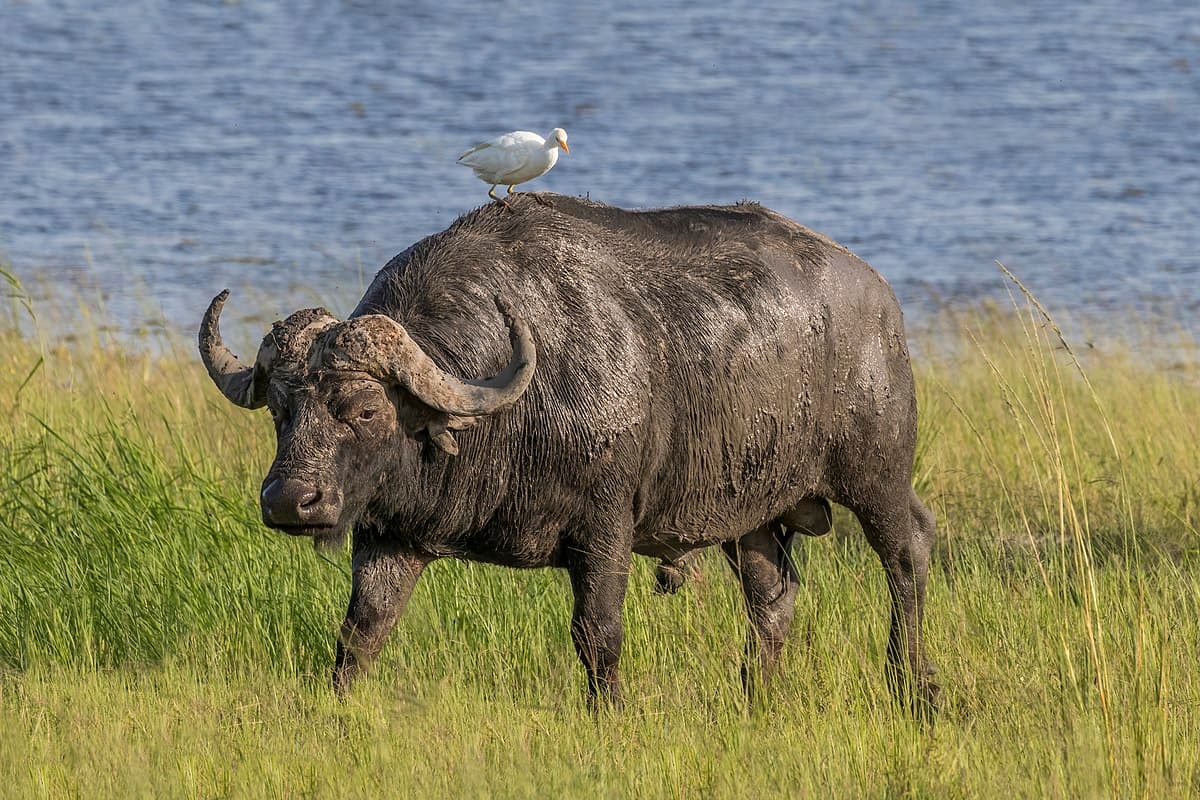
The Cape buffalo, often referred to as the “Black Death,” is a formidable and highly dangerous African ungulate. These massive herbivores possess a combination of physical attributes and temperaments that make them a serious threat to humans. With their imposing stature and sharp, curved horns, Cape buffalo are capable of inflicting devastating injuries. Unlike many other large mammals, they exhibit unpredictable behavior, often charging without provocation. When wounded or cornered, their aggression intensifies, making them extremely dangerous to hunters and wildlife enthusiasts alike. Their tendency to attack in groups further compounds the risk associated with encountering these formidable creatures.
Also, read: Top 10 Budget-Friendly Home Gardening Ideas for Beginners
7. Lion
- Height: 1–1.2 meters (at shoulder)
- Weight: 150–250 kg (males), 120–180 kg (females)
- Origin: Africa and India
- Humans Killed Annually: Varies widely by region, but estimated to be in the hundreds
- Perceived Threat: High, often seen as a symbol of power and danger
- Why dangerous?: Powerful jaws, sharp claws, and pack hunting behavior
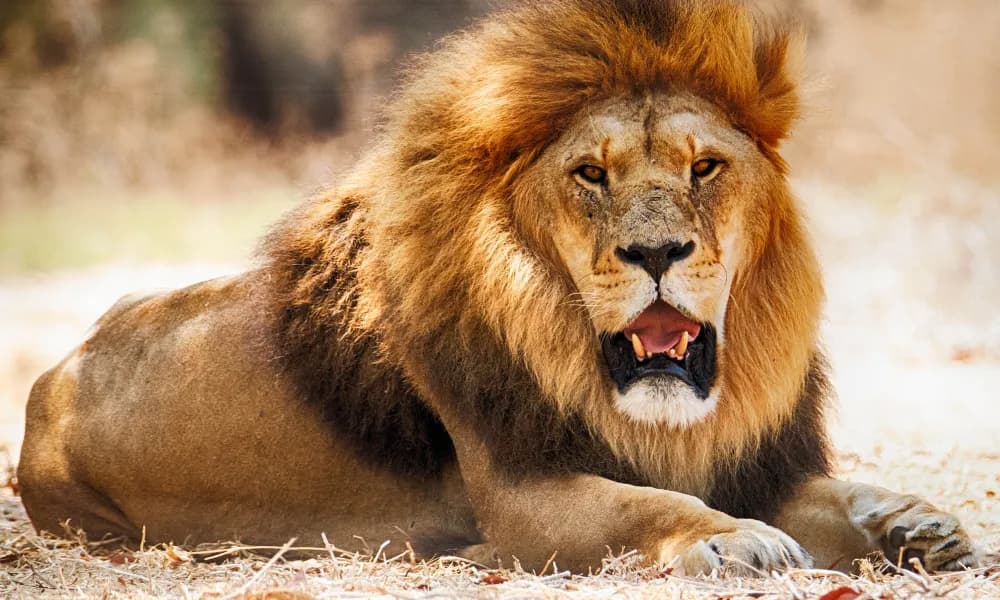
Lions, often referred to as the “king of the jungle,” are apex predators renowned for their strength and ferocity. Their muscular bodies, equipped with sharp claws and powerful jaws, make them formidable hunters. Living in prides, lions employ coordinated tactics to bring down large prey. While they primarily target animals, humans venturing into their territory can be perceived as threats, leading to attacks. Lion attacks on humans are often opportunistic or defensive, but they can also be predatory. Factors like habitat loss and human encroachment have increased human-lion conflict, making these magnificent creatures even more dangerous.
Also, read: Top 10 Tomato Growing Tips for Abundant Harvests
8. Great White Shark
- Height: Up to 6 meters (20 feet)
- Weight: Up to 2,268 kilograms (5,000 pounds)
- Origin: Fossil records indicate they existed over 16 million years ago
- Humans Killed Annually: Approximately 3–10 unprovoked attacks per year
- Perceived Threat: Iconic symbol of fear and fascination
- Why dangerous?: Powerful jaws, sharp teeth, and a reputation for aggressive behavior
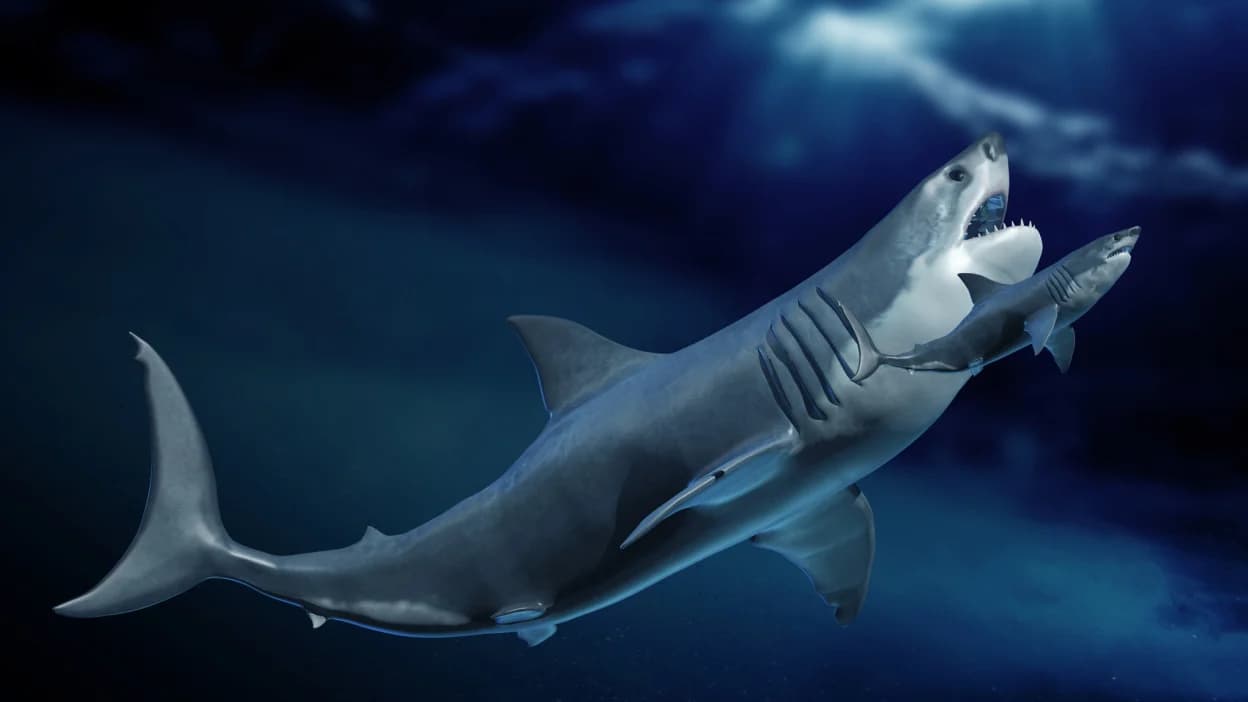
The Great White Shark, a behemoth of the ocean, has long captured the human imagination as a symbol of both fear and awe. Its formidable size, coupled with rows of razor-sharp teeth, makes it a formidable predator. While often portrayed as a mindless killing machine in popular culture, Great White Sharks primarily feed on seals, sea lions, and other marine mammals. Attacks on humans are relatively rare, often mistaken cases of mistaken identity. Nevertheless, the sheer power and unpredictability of these apex predators command respect. With their ability to detect even small traces of blood in the water, Great White Sharks are highly efficient hunters, capable of launching themselves completely out of the water to ambush their prey.
Also, read: Top 10 Front-Yard Decor Ideas for a Welcoming Entrance
9. Golden Poison Dart Frog
- Height: Approximately 1-2 inches (2.5–5 cm)
- Weight: Around 8 grams
- Origin: Colombia, Central and South America
- Humans Killed Annually: No direct human fatalities recorded, but potential is high
- Perceived Threat: Extremely dangerous due to its potent venom
- Why Dangerous: Possessing one of the most toxic substances on Earth
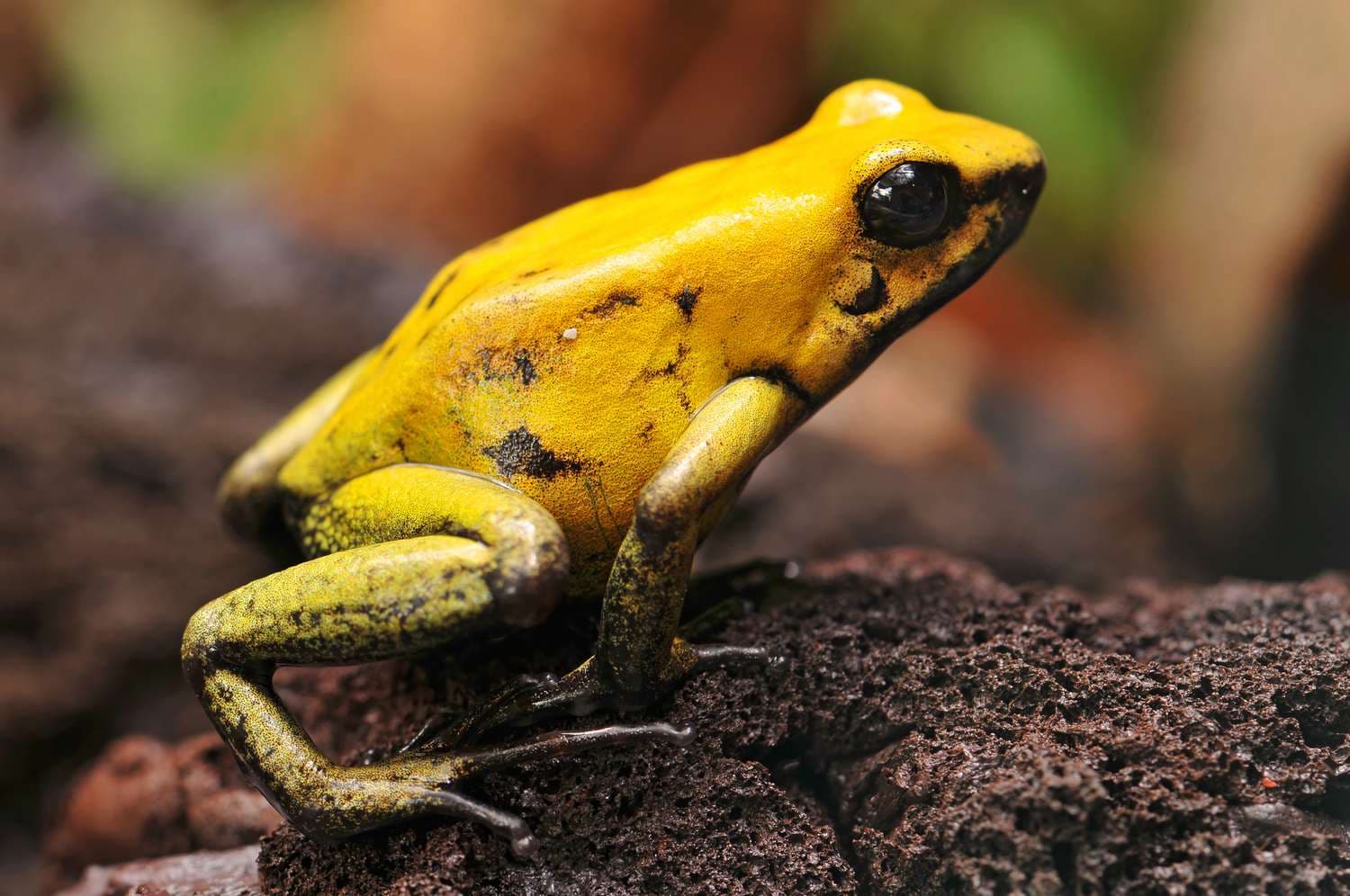
The Golden Poison Dart Frog, a vibrant splash of yellow in the rainforest canopy, is a creature that epitomizes the phrase “deadly beauty.” Hailing from the rainforests of Colombia, this tiny amphibian packs a punch far beyond its size. Its skin secretes batrachotoxin, a potent neurotoxin capable of paralyzing and killing within minutes. While the frog itself is not aggressive, mere contact with its skin can be fatal. Indigenous tribes in the Amazon have traditionally used the frog’s venom to poison the tips of their blow darts, hence the creature’s name. Although its striking appearance serves as a warning to predators, humans must exercise extreme caution when encountering this deadly jewel of the rainforest.
Also, read: Top 10 Budget-Friendly Backyard Decor Ideas in 2024
10. Tsetse Fly
- Height: 9–15 mm
- Weight: Approximately 5–10 mg
- Origin: Sub-Saharan Africa
- Humans Killed Annually: It is difficult to pinpoint exact figures due to overlapping diseases, but millions affected
- Perceived Threat: Often overlooked compared to larger predators, but a significant public health concern
- Why Dangerous: Transmits deadly parasites causing African trypanosomiasis (sleeping sickness)
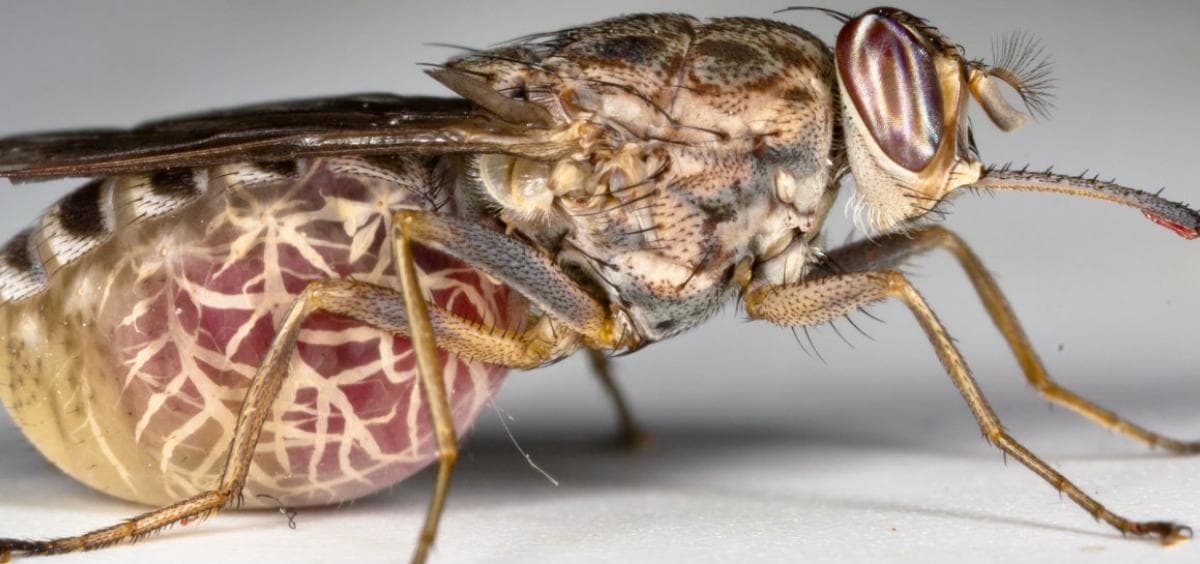
The tsetse fly, a menacing insect native to sub-Saharan Africa, poses a grave threat to human health. These flies are notorious vectors of the deadly parasite Trypanosoma, which causes African trypanosomiasis, commonly known as sleeping sickness. The disease, characterized by neurological symptoms, can be fatal if left untreated. Tsetse flies are particularly insidious due to their ability to transmit the parasite through their bite. As they feed on the blood of infected animals, they become carriers of the deadly trypanosomes. When these flies subsequently bite humans, they inject the parasites into their bloodstream, initiating a devastating infection. The impact of sleeping sickness on human populations and economies in Africa is substantial, with remote rural communities bearing the brunt of the disease.
Also, read: Top 10 Cat Breeds in the World
FAQs: Most Dangerous Animals in the World
Q. What is the deadliest animal on Earth?
Mosquitoes are considered the deadliest animals due to the diseases they transmit, such as malaria, dengue, and Zika, which claim millions of lives annually.
Q. Which animal causes the most human deaths?
Snakes are responsible for a significant number of human deaths each year due to venomous bites.
Q. What is the most dangerous animal in the water?
The saltwater crocodile is often considered the most dangerous animal in the water due to its size, strength, and aggressive nature.
Also, read: Top 10 Minimalist Living Tips for Decluttering Your Life
Q. Which is more dangerous, a lion or a tiger?
Both lions and tigers are apex predators and pose significant threats to humans. However, lions tend to have a higher rate of attacks on humans.
Q. How can I protect myself from dangerous animals?
To protect yourself from dangerous animals, it’s essential to respect wildlife, avoid their habitats, and follow safety guidelines when in areas known to have dangerous animals.
Q. Are sharks really as dangerous as portrayed in movies?
While shark attacks do occur, they are relatively rare. Most shark species are not interested in humans and attacks are often cases of mistaken identity.
Q. What is the most venomous animal in the world?
The box jellyfish is often cited as one of the most venomous animals, with its potent venom capable of causing severe pain and even death.
Also, read: Top 10 Dog Walking Apps in 2024
Q. Are hippopotamus really dangerous?
Yes, hippos are incredibly dangerous. They are territorial and aggressive, causing numerous human fatalities each year.
Q. Can I safely swim in a lake or river?
While it’s generally safe to swim in most lakes and rivers, it’s important to be aware of potential dangers such as strong currents, underwater obstacles, and the presence of wildlife.
Q. What should I do if I encounter a dangerous animal?
If you encounter a dangerous animal, the best course of action is to remain calm, avoid provoking the animal, and slowly back away.
Conclusion: The final words
The world is a fascinating place, teeming with diverse life, but it’s also home to some of the most dangerous creatures imaginable. From the microscopic mosquito to the colossal saltwater crocodile, these dangerous animals have adapted to their environments in ways that make them formidable predators or carriers of deadly diseases. While encounters with such creatures are often rare, understanding the risks posed by dangerous animals is crucial for survival and respect for nature. It’s essential to be aware of the habitats of these animals and to take necessary precautions when venturing into their territories. By recognizing the potential dangers and adopting responsible behaviors, we can coexist with these creatures while minimizing the risks to ourselves.

